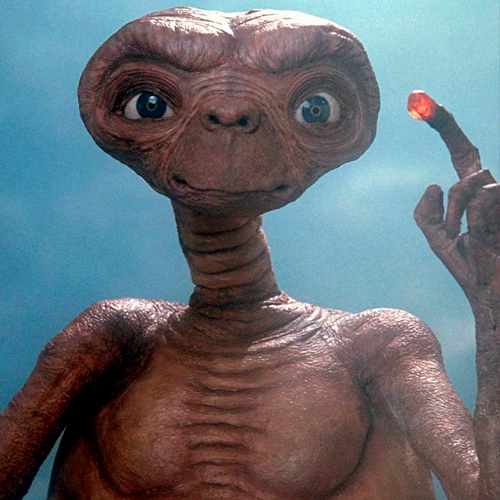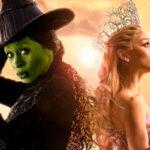

Since its debut in 1982, “E.T. The Extra-Terrestrial”, directed by Steven Spielberg, has captivated generations of audiences worldwide with its compelling story and memorable characters. This cinema classic not only delighted audiences with its engaging narrative but is also rich in fascinating tidbits that unveil the behind-the-scenes of its production and intriguing details about its development. In this exploration of the curiosities behind “E.T. The Extra-Terrestrial,” we will delve into surprising aspects that contributed to the enduring magic of this iconic film.
1 – THE FILM WAS ORIGINALLY DARK
Before telling an emotional story of friendship, Spielberg conceived a much darker initial idea. Originally, the plot would revolve around a family haunted by threatening aliens. However, there was a twist in the plans, turning E.T. into a friendly figure.
Nevertheless, the initial conception wasn’t entirely abandoned. The theme of a family in peril was utilized in the film “Poltergeist,” also written by Spielberg in 1982. Both productions were designed to complement each other, with “E.T.” representing benevolence in the world of fantasy, while “Poltergeist” embodied the threat.
2 – TALENTED CHILD CAST
Drew Barrymore, at just six years old when cast as Gertie, Elliot’s sister, displayed precocious talent during filming by improvising some of her lines. One of these improvisations, when her character expresses disgust at E.T.’s feet, delighted Spielberg to the point of keeping the scene in the film. Henry Thomas also impressed producers with his poignant performance during auditions. Without receiving the full script, Thomas was instructed to improvise a scene with a “government agent.” Spielberg’s only guidance to Thomas was to prevent the agent from taking E.T. Despite his youth, Thomas moved everyone by pleading for his alien friend not to be taken, thus securing the role. Spielberg’s iconic line confirming Henry’s casting became legendary: “Ok kid, you got the job.”
3 – E.T.’S VISUAL
Conceiving the face of an extraterrestrial being and making it captivating for the audience was a formidable challenge faced by Spielberg. He enlisted the collaboration of production illustrator Ed Verreaux and special effects expert Carlo Rambaldi. One of the early sources of inspiration was a painting by Rambaldi titled “Delta Women,” depicting beings with large, wrinkled eyes, and long necks.
To instill empathy in the alien, Spielberg instructed Rambaldi to study photographs of elderly people who lived during the Great Depression. Additionally, the facial design of the alien was compared to images of figures such as scientist Albert Einstein, writer Ernest Hemingway, and poet Carl Sandburg.
4 – ACTORS, PUPPETS, AND ANIMATRONICS
Primarily, the character of E.T. was brought to life through a puppet, although the team also developed a version with animatronics. Additionally, in some scenes, human actors wore rubber suits to portray the alien. Actors Tamara de Treaux, Matthew DeMeritt, and Pat Bilon were selected to play this role.
Treaux and Bilon, who are actors with dwarfism, appeared in scenes requiring full-body movement of the alien. They used special suits to enable the portrayal of E.T. walking in expansive scenes.
On the other hand, in specific situations such as when E.T. falls due to the effect of alcohol, Matthew DeMeritt, an actor born without legs, was chosen. His suit was specially adapted to allow him to walk on his arms, symbolizing the alien’s feet.
5 – UNCREDITED ARTISTS
Beyond the actors and the film production crew, other professionals were needed to contribute to the movie. In order to ensure authenticity, real doctors and nurses were recruited to participate in the production. They were instructed to interact with E.T. as they would with a human patient, aiming to convey authenticity to the dialogue.
Additionally, in the chase scene, BMX (Bicycle Moto Cross) stunt riders were used to perform all the maneuvers. Three professional riders, uncredited, were selected for this task. Over two weeks of work, they executed their performances without fully comprehending the importance of their roles in the film.
6 – RECORDS AND AWARDS
Released on June 11, 1982, in the United States, “E.T. The Extra-Terrestrial” shattered records by staying in theaters for over a year, achieving remarkable financial success with a worldwide gross of over $792 million. This feat surpassed even the epic “Star Wars” (1977), becoming the highest-grossing film in history for 11 years, until Steven Spielberg surpassed his own record with “Jurassic Park” in 1993.
In terms of awards, “E.T.” received nine nominations at the 1983 Oscars, including the prestigious Best Picture category. At the ceremony, the film won four statuettes: Best Sound, Best Visual Effects, Best Sound Editing, and Best Original Score.
7 – SUCCESSFUL FILM, FAILED GAME
With the huge success of the film, people wasted no time and released an Atari 2600 video game for that year’s Christmas, 1982.
Howard Scott Warshaw had only 5 weeks to create everything from scratch, and he made one of the worst games of all time, with several bugs that greatly annoyed fans.
Millions of cartridges were produced, but it was a sales flop.
Then a legend was born: that the cartridges were buried in the desert.
And the legend was correct: 20 years later, an excavation team managed to find copies of the buried game cartridge in a landfill in New Mexico, United States, buried in 1983.
With its poor plot and terrible gameplay for the time, the game was considered one of the worst in history. The failure led Atari to bury all the excess production of the game in the desert. Along with E.T., millions of Pac-Man cartridges were also discarded.
In essence, the behind-the-scenes curiosities of “E.T. The Extra-Terrestrial” reveal not only the making of a cinematic masterpiece but also the dedication and creativity required to create a cultural icon. From the innovative choices in crafting the titular character to the box office records and awards achievements, this film continues to enchant and inspire generations. More than just a story of friendship between a boy and an alien, “E.T. The Extra-Terrestrial” remains a lasting testament to the power of cinema in transporting us to worlds of wonder and emotion.








